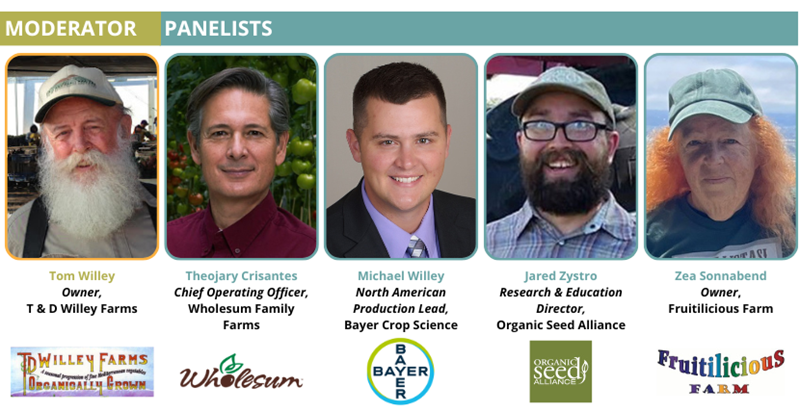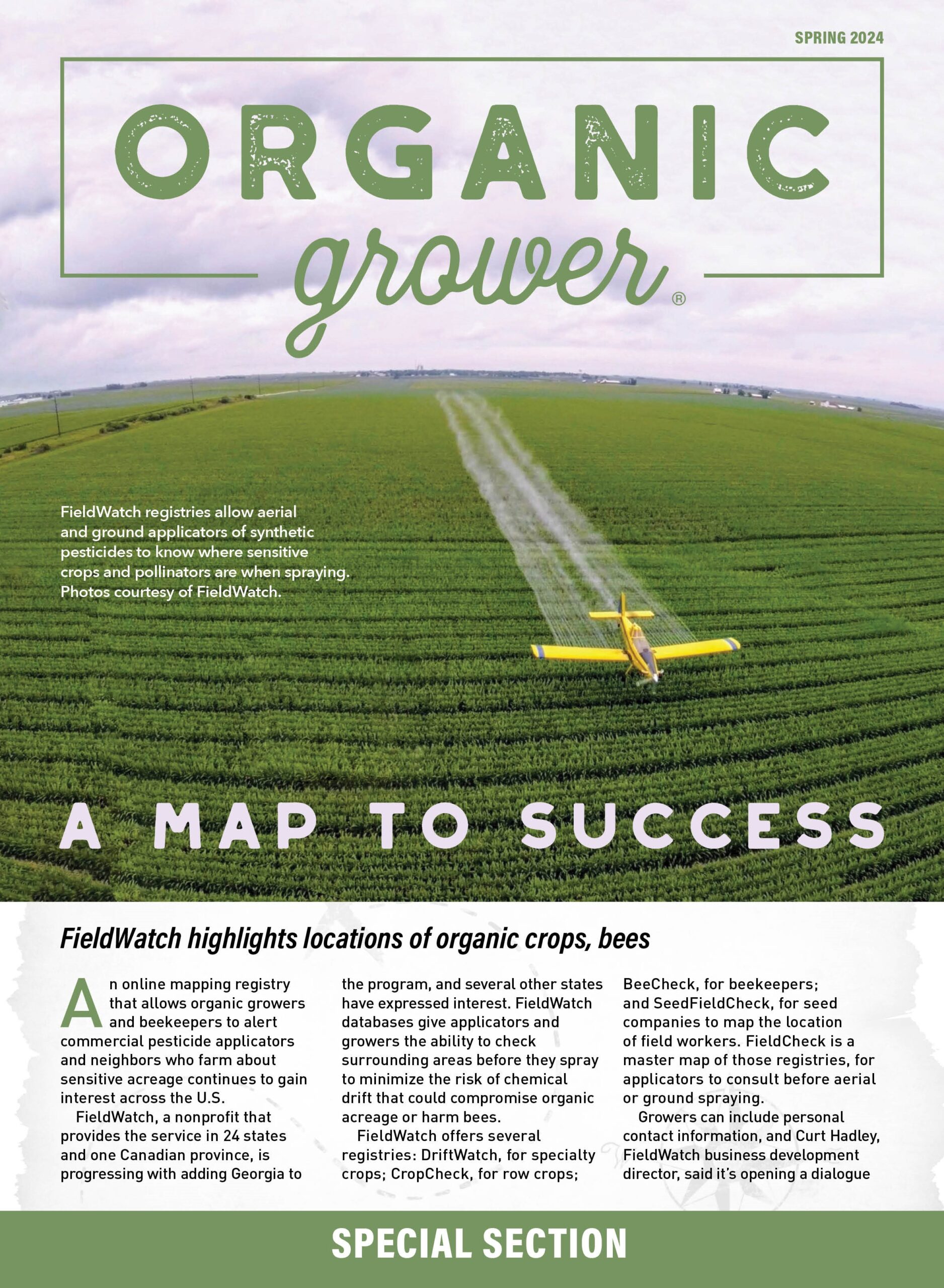Dec 20, 2023
Growers seek increased production of organic seeds
Though certified organic farming acreage has steadily grown in California and the U.S., farmers say they still have trouble securing organic seeds for planting.
Some growers continue to call for a tightening of national organic standards to drive needed growth in organic seed production. They say current rules allow exemptions to using organic seeds, thus slowing development of seed varieties and discouraging production of more diverse seed options for organic farmers.
 At the Organic Growers Summit in Monterey last month, a panel discussion entitled “Challenges of Organic Seed Production” revealed continuing frustrations for growers who want certified organic seeds.
At the Organic Growers Summit in Monterey last month, a panel discussion entitled “Challenges of Organic Seed Production” revealed continuing frustrations for growers who want certified organic seeds.
During the discussion, Theojary Crisantes Jr., chairman of the Organic Produce Association, urged growers to commit to producing and procuring more organic seeds.
Crisantes is chief operations officer of Wholesum Family Farms, which has production in Watsonville, Arizona and Mexico. Two years ago, the firm began producing organic cucumber and pepper seeds in partnership with a Dutch seed company.
“This has been our journey,” Crisantes told attendees. “I encourage everybody to think about this and be part of the solution — one, by procuring the seeds but maybe even thinking about the production of seeds.”
Zea Sonnabend, an organic farmer at Fruitilicious Farm in Watsonville, blamed exemptions to organic standards for diminishing demand for organic seeds.
While regulations for other aspects of the national organic certification process remain strict, she said, using organic seed remains a less stringent aspect of certification.
The U.S. Department of Agriculture requires farmers to use organic seed to be certified organic. The USDA National Organic Program requirements state that organic producers “must use organically grown seeds, seedlings and planting stock.”
But USDA also allows exemptions that enable growers to use untreated, conventionally grown seeds when they cannot source organic seeds in the “form, function and quality that was required for production,” Sonnabend said.
Sonnabend worked on the team that developed California’s original organic regulations, which inspired some of the national certification standards, she said. Now, organic policy advocates are working to correct seed market deficiencies that may have resulted from exceptions to organic regulations, Sonnabend said.
“It is the intent of activists and regulators in the seed world to try and strengthen these recommendations to encourage the use of more organic seed,” she said.
In spring 2019, the National Organic Standards Board recommended updating organic seed guidance for the National Organic Program to spur more production. Similar recommendations were made in 2005 and 2008. Sonnabend said the latest recommendations are more strident in seeking to uphold a “founding principle of organics.”
In Europe, regulatory pressure helped boost the organic seed market, said Jared Zystro, research and education assistant director of the agricultural advocacy group Organic Seed Alliance, a Port Townsend, Washington, nonprofit dedicated to promoting “an abundant and diverse supply of organic seed.”
But demand for organic seed in the United States still remains low, Zystro said.
“There is real interest in growing the organic seed market, but the challenge for seed producers is the demand side,” he said. “If we want to see investment in the needs of organic growers, we need to see some increased uptake in organic seed among growers.”
Zystro said the Organic Seed Alliance’s 2022 State of Organic Seed report noted the seed market remains stagnant for vegetable farms of more than 50 acres. “There is a lack of growth or decrease in use of organic seed among the largest vegetable farms,” he said.
Michael Willey, North America production lead at Bayer Crop Science, appealed to growers at the Monterey gathering to reach out and tell seed companies if they want organic seed. Breeding programs can take between 10 to 12 years to produce seed at a large scale, Willey said.
“We’re really hoping to partner with many of you and hopefully get into this space of producing organic seed if that is where you, our customer, are willing to go,” Willey said.
Crisantes described some drawbacks to growing seed, including getting adjusted to a one-time payment for seed versus the constant cash flow of growing vegetables. He also listed benefits of growing organic seed, from predictable, set prices for the crop to rewarding relationships built with seed scientists.
Zystro said growing more organic seed can boost crop genetics. He said unique strains of genetics are frequently discarded because the seed market is not robust enough to support diverse varieties.
“There could be varieties addressing your production challenges or opportunities for new markets that you could capture with unique colors and flavors,” Zystro said. “There could be a lot more options and more organic-tailored genetics if there was more investment.”
Zystro said using organic seed reinforces organic integrity and standards while also maintaining a trusting relationship with consumers, who believe organic produce comes from organic inputs.
“Whenever there is a discrepancy between consumer expectation and the realities,” Zystro said, “it’s a risk point for everyone.”
— Caitlin Fillmore, for California Farm Bureau’s Ag Alert. She may be contacted at cslhfillmore@gmail.com.






